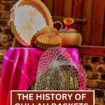
Go World Travel is reader-supported and may earn a commission from purchases made through links in this piece.
While wandering through the markets of the coastal area of Charleston, South Carolina, known as the Lowcountry, you’ll see intricate and beautifully crafted seagrass baskets. The creation of which began about 300 years ago. These baskets are made by the Gullah people.
They are descendants of the Gola tribe living on the Sierra Leone-Liberia border in West Africa. It was from here that many Africans were captured in the 17th century and enslaved to work the plantations of the American South.
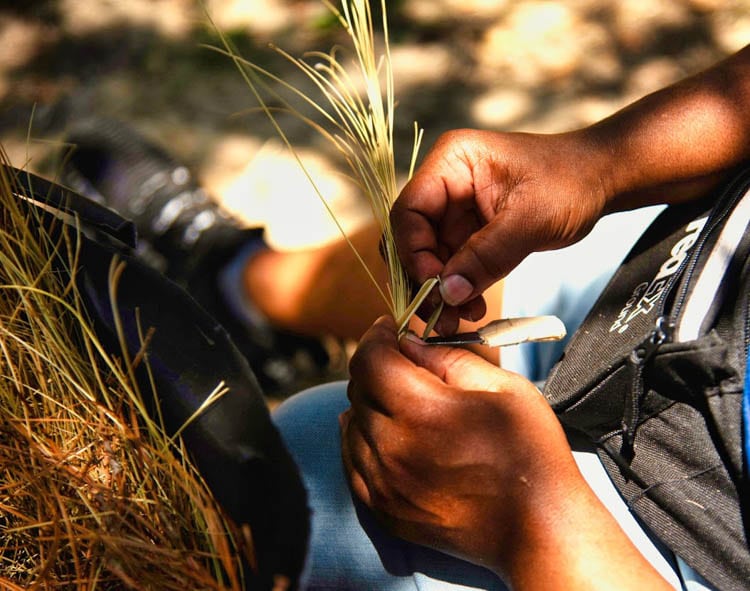
The Beginnings of Gullah Baskets
The word Gullah itself derives from the Gola. They were rice-growing people who made baskets in their homeland to winnow rice. This is the act of tossing the rice into the air to separate the rice from the chaff. This type of basket came to be known as the fanner.
Today, the name Gullah has become practically synonymous with the baskets themselves. The baskets, however, are not a simple weaving together of locally harvested sweetgrass and bulrush.
Their crafters use a needle made from a spoon handle sharpened to a point to sew the grasses together. This results in a sturdiness that will last for years of constant use.
Sweetgrass baskets were an agricultural necessity on the plantations of South Carolina in the 19th century. They were made into coiled baskets with bulrush. The baskets were used in planting and harvesting crops and in the collection and storage of vegetables, grain, cotton, fish, and shellfish.
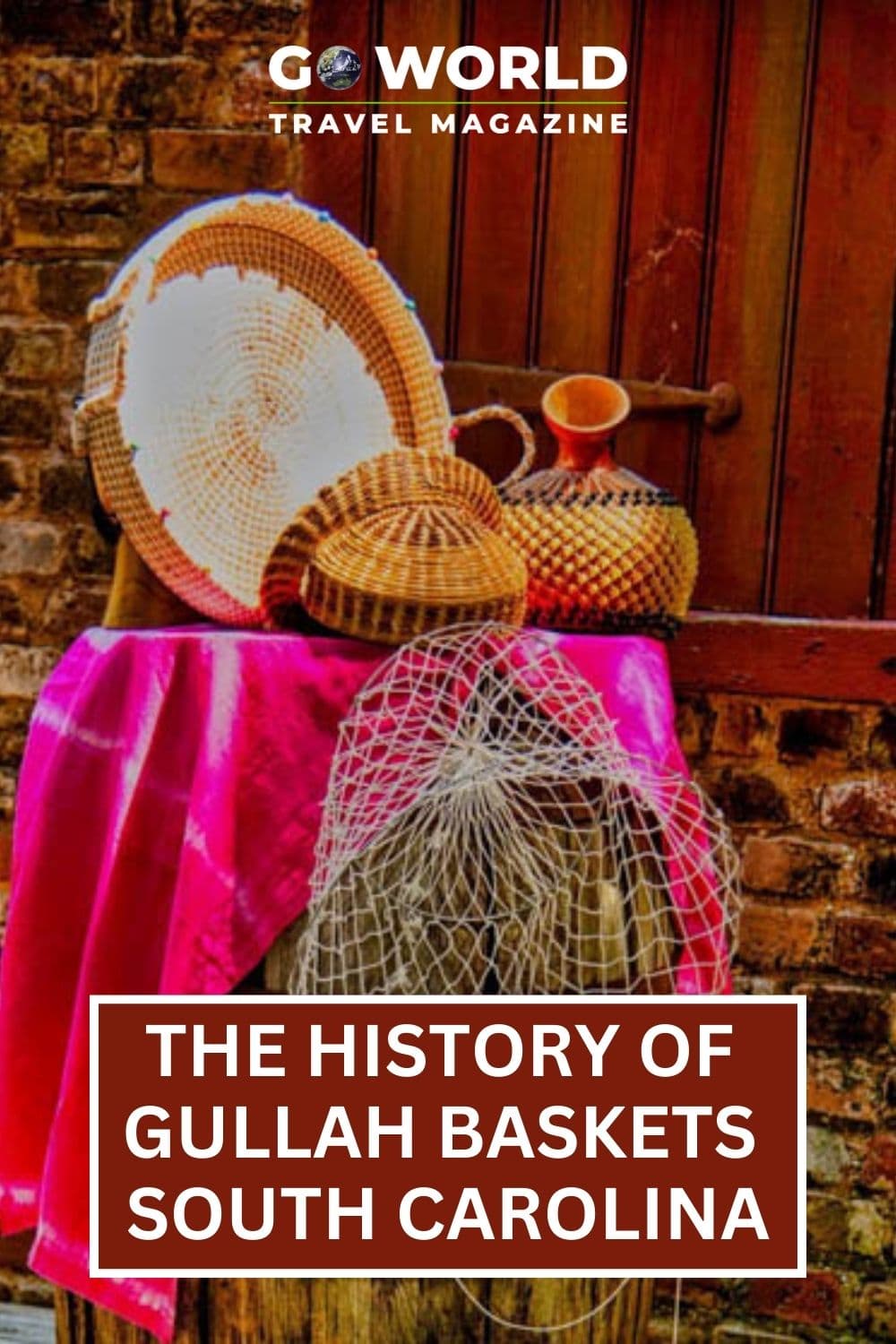
Freedom and the Evolution of Gullah Baskets
After the civil war ended, and many enslaved people found their freedom, coiled baskets evolved into more household uses than agricultural use.
They took many forms depending on what the basket would be used for. For example, carrying produce to the market and storing household goods. Work baskets were made by both men and women.
Best Tips & Tools to Plan Your Trip
However, they were most often created by men using black needle rush, coiled and bound with split oak and strips of palmetto. Instead of using only bulrush, the women used softer and more pliable grass.
It was commonly called ‘sweetgrass’ because of its more pleasant, hay-like scent. It also made their handiwork easier than it had been with the bulrush.
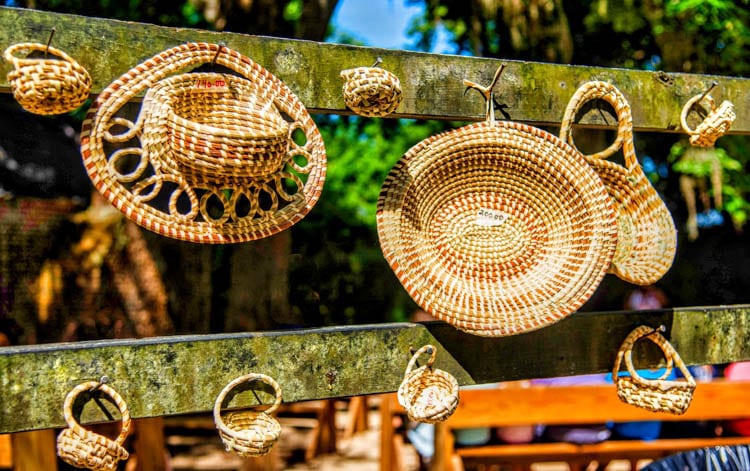
Gullah Baskets Become an Art Form
Sweetgrass basket-making had almost vanished by the early 1900s. This was because of decreased need among the Gullah people for household use of the baskets. However, the crafting of baskets became a way of making money after the construction of the first bridge to cross the Cooper River in 1929.
In addition, the paving of Hwy 17 in Mt Pleasant in 1931. The late Lottie Moultrie Swinton, a basketmaker at Boone Hall Plantation decided to open a basket stand along the highway to make her craft more available to tourists.
In the early 20th century, African American women began creating and selling to tourists. Their “show baskets” were made from sweetgrass and sewn with strips of the palmetto leaf. These women descended from slaves who had made up about eighty-six percent of Christ Church Parish in 1720.
Other women copied Lottie’s idea. Soon roadside basket stands were commonly seen on Hwy 17 north, making Mt. Pleasant the center of sweetgrass basket-making in the Lowcountry.
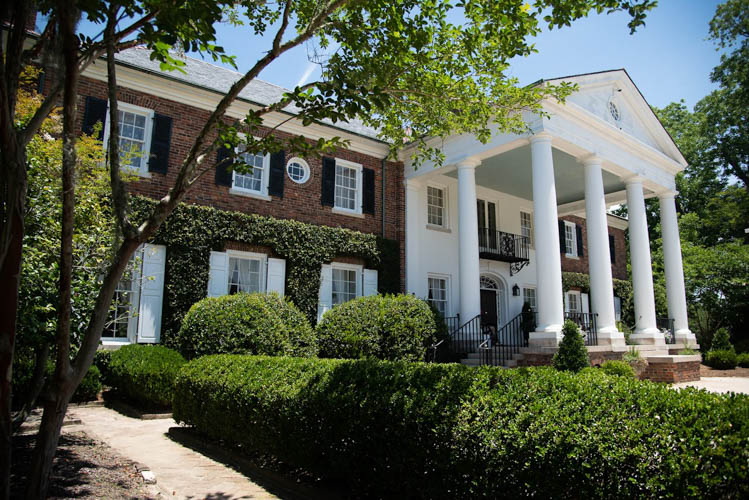
Image by Ava Kabouchy
Boone Hall Plantation
When you visit Charleston you can learn about the Gullah culture and its crafts at Boone Hall Plantation. The plantation is a 20-minute drive from downtown.
You’ll be treated to a presentation in words and in song by a Gullah woman, Jennifer Singleton. With great enthusiasm and stagecraft, she explains the importance of the baskets as a way of preserving the Gullah culture and passing it down through the generations.
If you visit the plantation on any Monday or Wednesday, you will also have a chance to speak with Sharnell. She demonstrates to visitors how she makes the baskets, a craft she learned from her mother and grandmother.
It was clear she was proud of the heritage passed down to her. In front of Sharnell, you will see a display of her work – baskets of impressive shapes and sizes, a testament to her skill. The descendants of African slaves, women like Sharnell are keeping their heritage and culture alive by continuing the crafting of Gullah baskets.
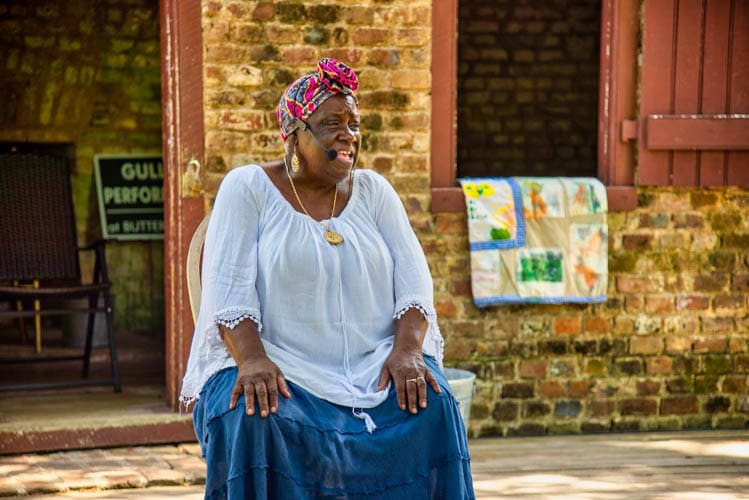
Saving a Tradition
However, while sales for sweetgrass baskets are flourishing, Charleston’s burgeoning population growth and planned communities along Hwy 17 have caused the basket makers to retreat further away from the eyes of passing tourists.
Additionally, because of land development of the coastal islands and marshland, sweetgrass and bulrush raw materials are diminishing.
A heightened awareness and community action are needed to ensure the supply of sweetgrass and bullrush if this traditional art of basket making as a Lowcountry tradition is to continue and be appreciated. It is a way to remember what the Gola people, brought to Charleston and sold into slavery, have contributed to American culture and heritage.
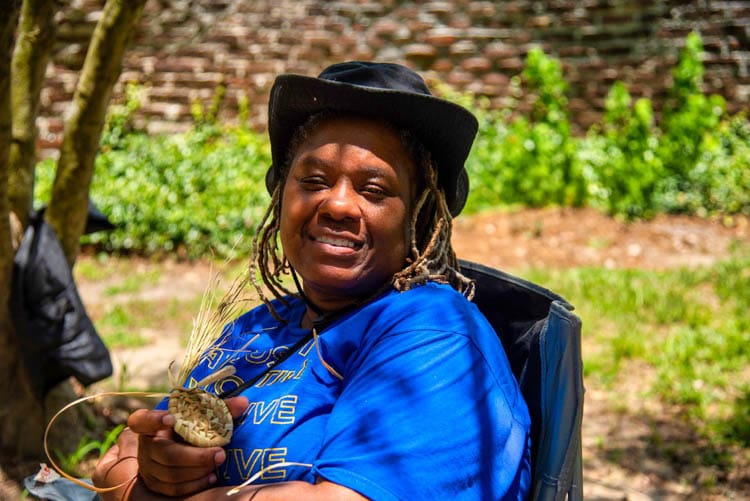
Magnolias in bloom, carriage rides with horse-drawn buggies, immaculate beaches and homes with gleaming, white columns looking like they were built yesterday.
This is the Charleston of today. But there is also an increasing awareness of the people whose toil built the plantations and created the wealth to build such homes.
Enslaved Africans of past centuries must be recognized for their technical, culinary and artistic talents that help define the Lowcountry. The Gullah baskets are a prime example of the artistic talent thriving there.
Author Bio: Ava Kabouchy is an American living in Perpignan, France. Now doing freelance writing and photography, Ava has traveled and worked abroad extensively, most recently as a teacher of English as a Foreign Language in Saudi Arabia. She has authored travel articles on France, Saudi Arabia, Spain’s Camino de Santiago, the United States, and Iceland, as well as a book for young readers on her adventures in Saudi Arabia.

